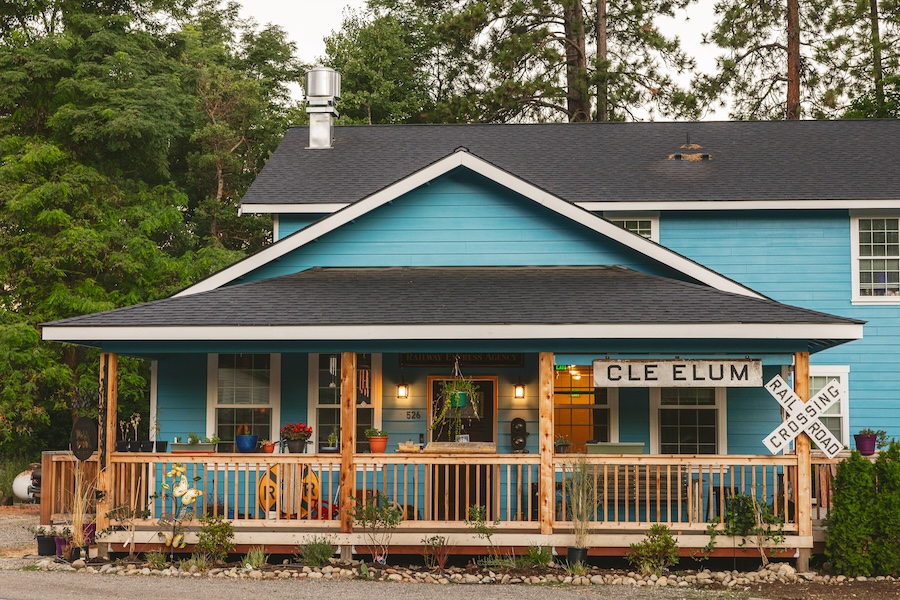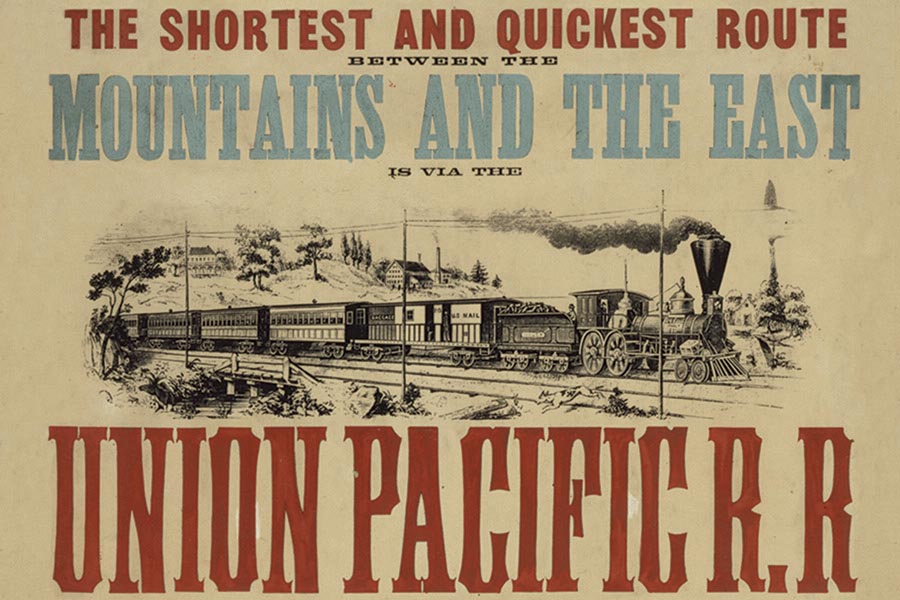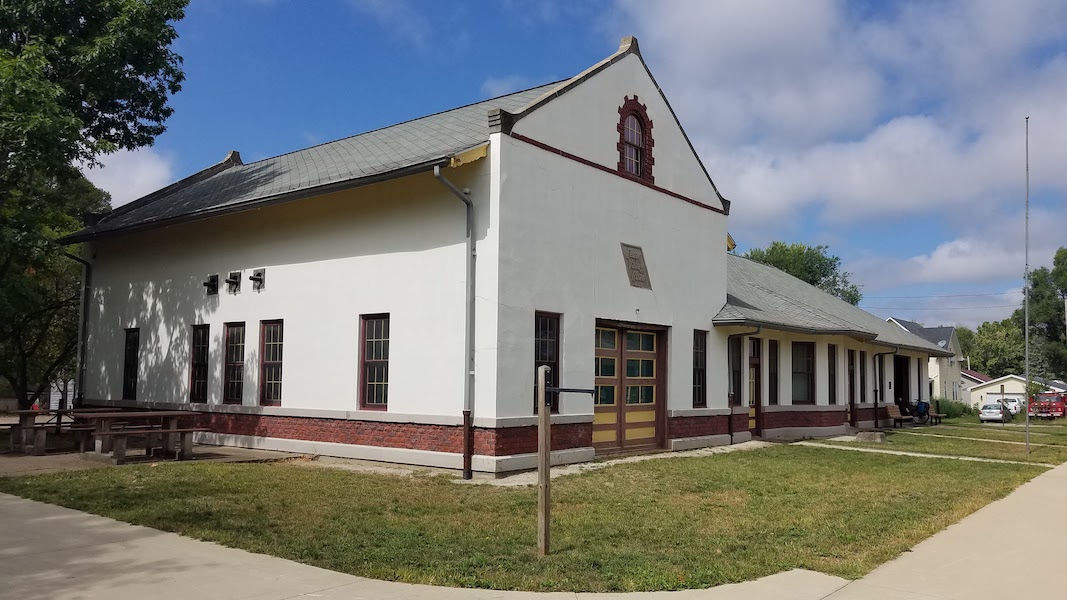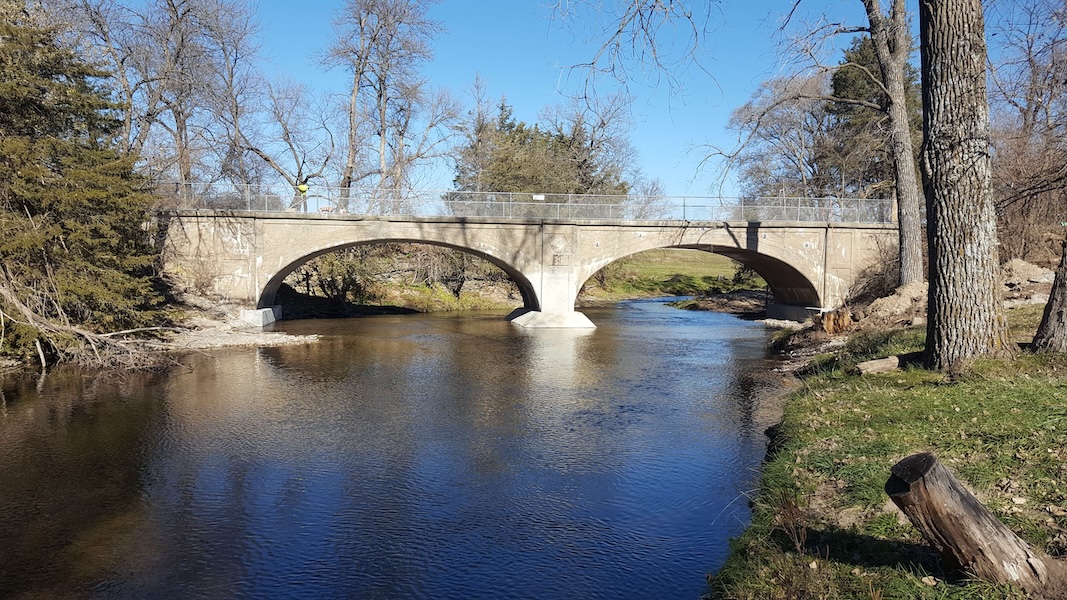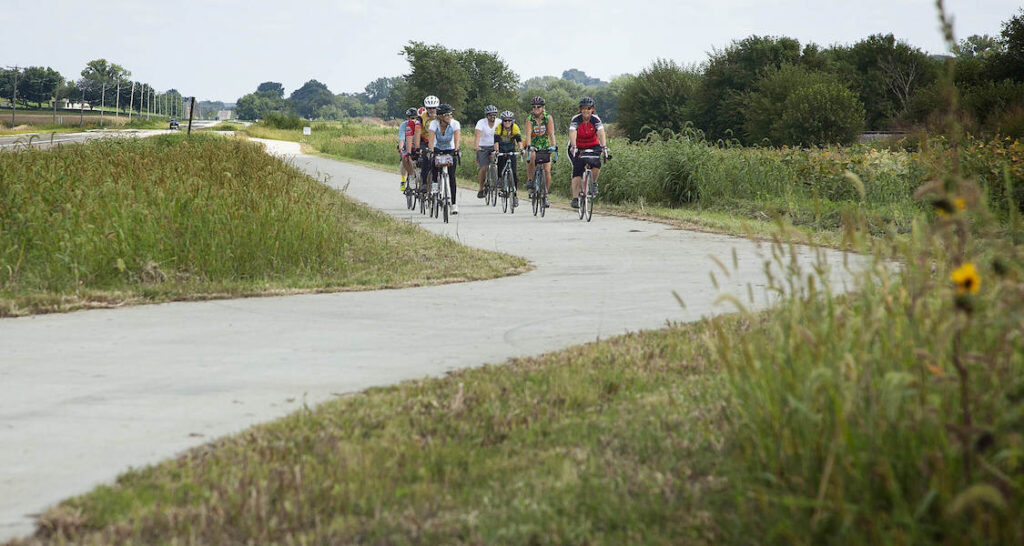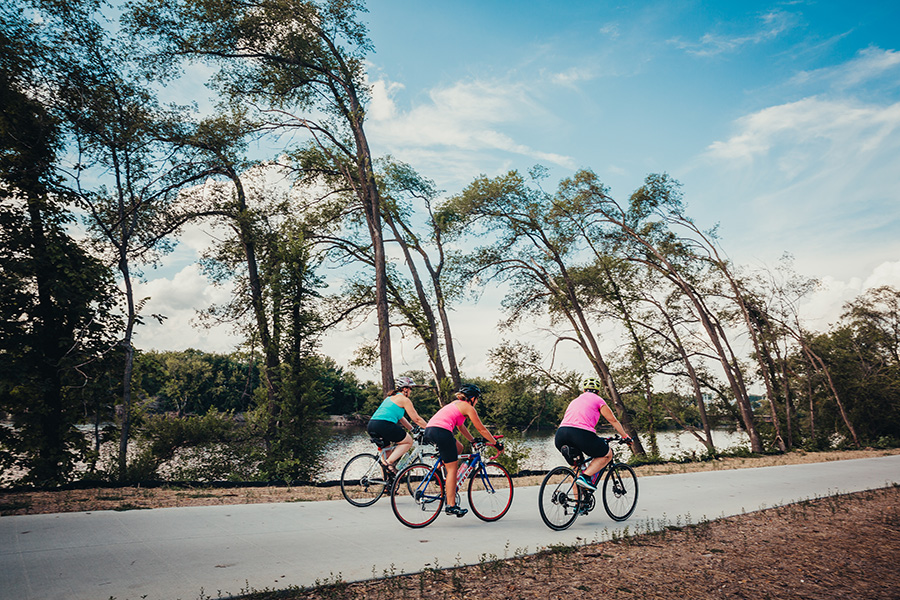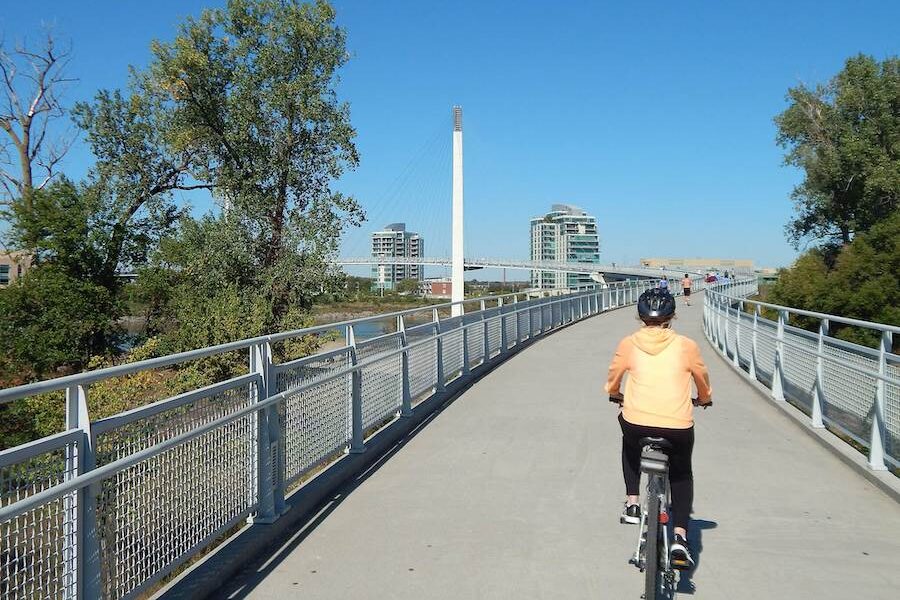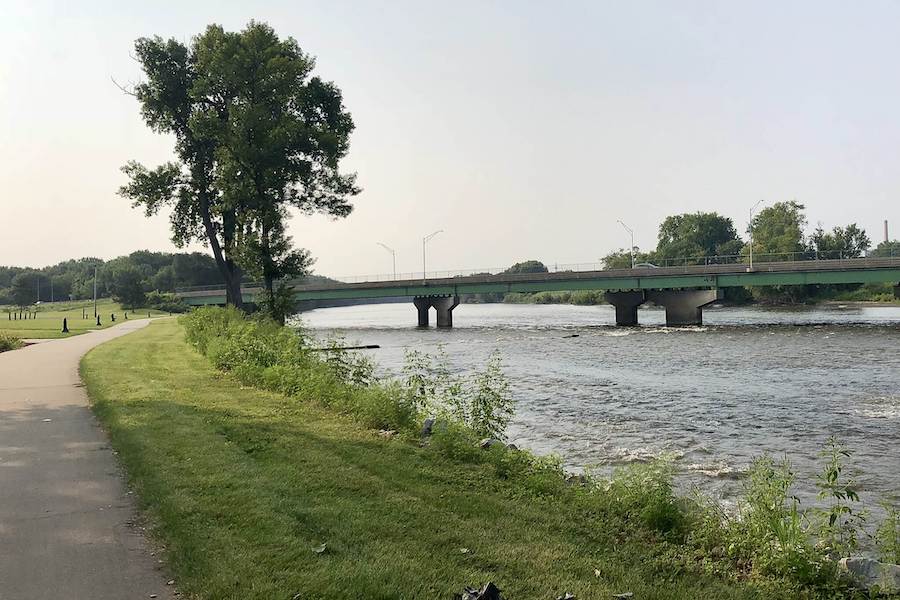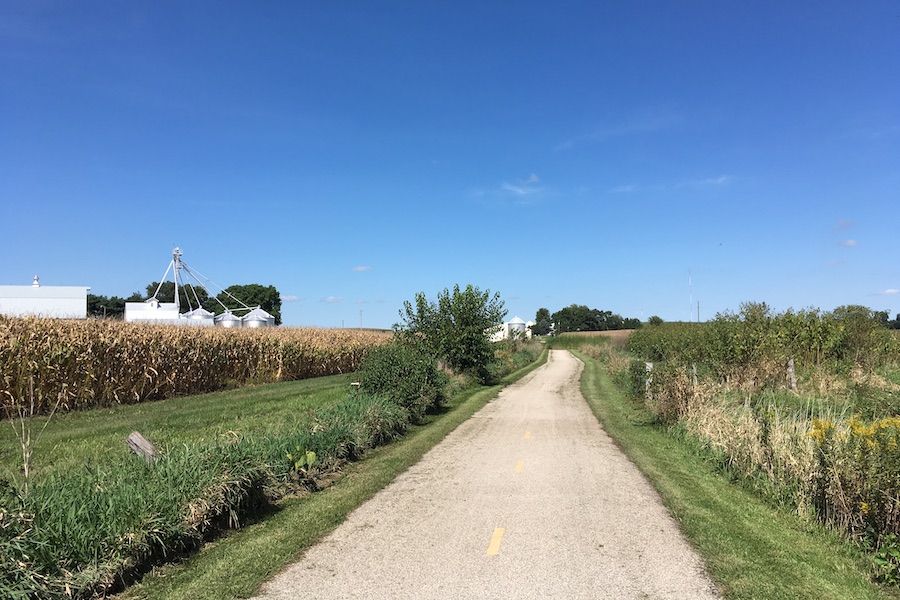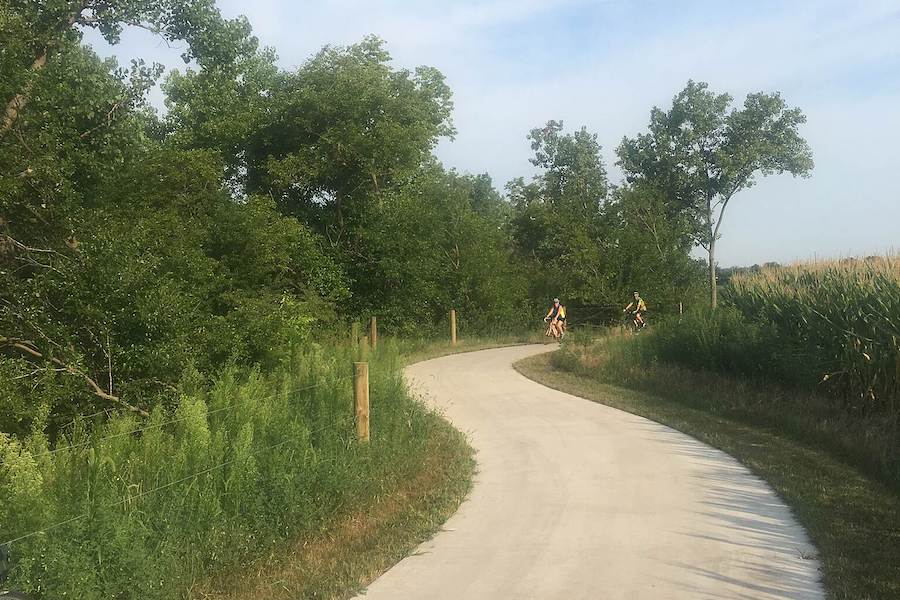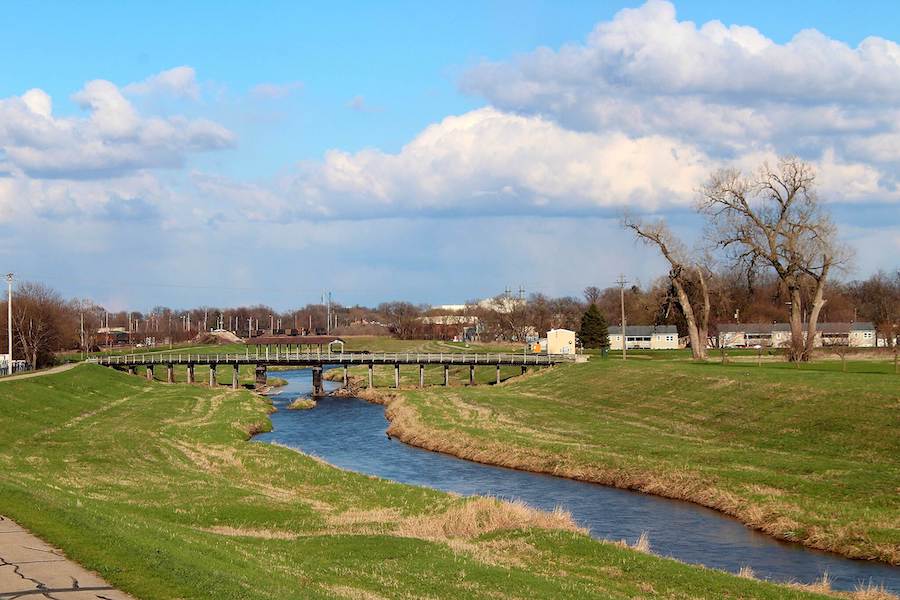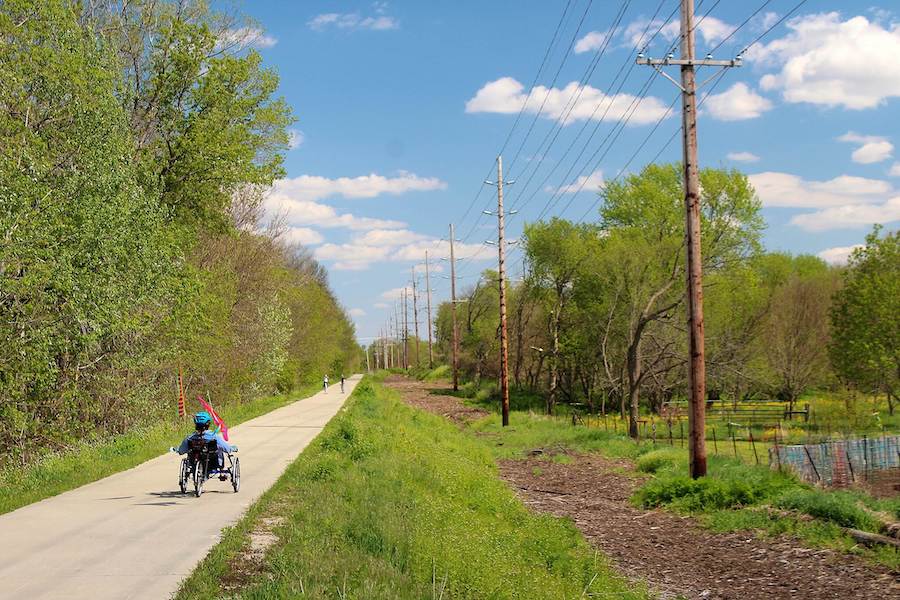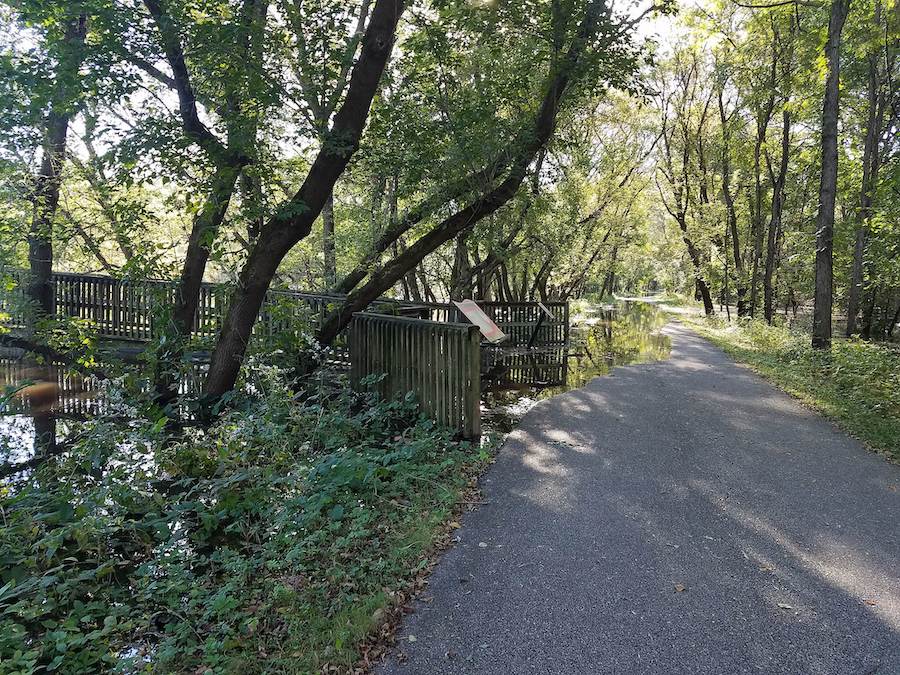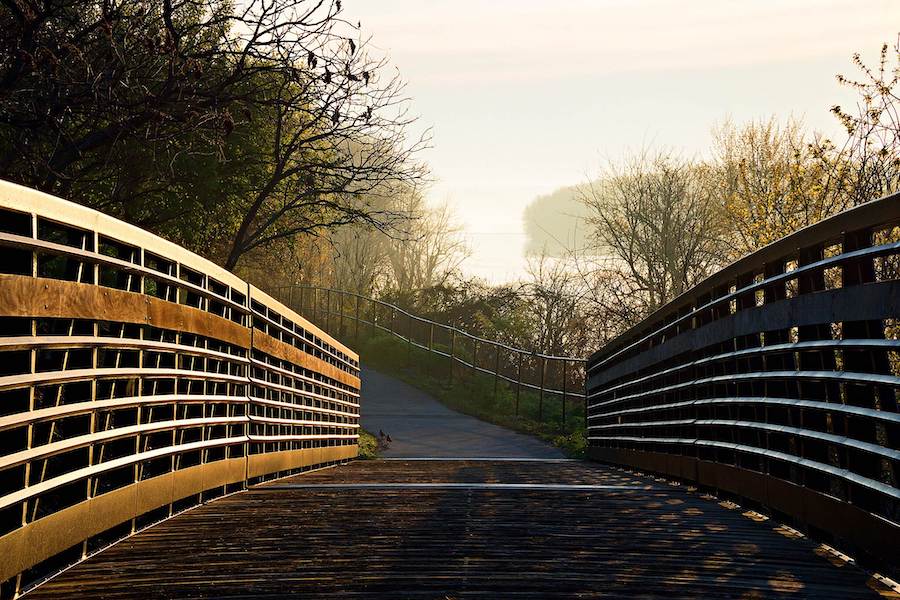Great American Rail-Trail In Iowa
Iowa’s High Trestle Trail | Photo by Milo Bateman, courtesy RTC
The first state in the nation to put the Railbanking Act of 1983 to use, Iowa has a long history of leadership in trail development. Its rich network of trails includes well-established pathways such as the picturesque Cedar Valley Nature Trail—one of the state’s first rail-trail conversions and the state’s Great American gateway trail—and the nationally renowned High Trestle Trail with its famous mine-shaft-themed art installation. These trails will join with dozens of other trails to create a 465-miles-plus route from Davenport to Council Bluffs.
Iowa is rich in railroad and western trail history, with Council Bluffs having served as the eastern terminus for the first transcontinental railroad and a stop along the 1804–1806 Corps of Discovery Expedition—now the headquarters for the 3,700-mile Lewis and Clark National Historic Trail.
The “Great American” Route Through Iowa
The Great American Rail-Trail travels through Iowa from Davenport to Council Bluffs at the western end of the state. Iowa has a rich network of trails, and on-the-ground trail partners are critical to its thriving trail culture and the development of the Great American in the state. While there are currently more than 204 miles of trail gaps to develop, support for the Great American is strong across Iowa, which branded itself as the “World Capital of Trails” in 2024.
461.1
Total Miles256.2
Existing Miles204.9
Gap Miles55.6%
Complete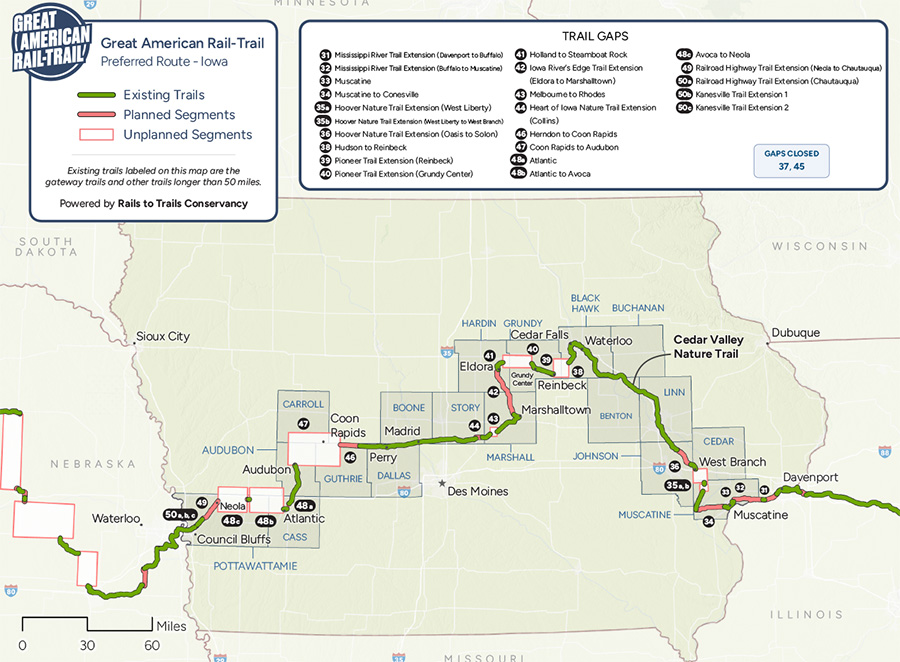

Trails Along the Route
Tap thumbnail to view photo gallery.
Click the links below to view full trail descriptions on TrailLink.com.
- Government/Arsenal Bridge
- Mississippi River Trail/Riverfront Trail
- Running River Trail System
- Kent Stein to Deep Lakes Park Trail
- Hoover Nature Trail
- Cedar Valley Nature Trail
- Gilbert Drive Trail
- Evansdale Nature Trail
- River Forest Road Trail/Cedar River Levee Trail
- Cedar Valley Lakes Trail
- South Riverside Trail
- Cedar Prairie Trail
- Sergeant Road Trail
- Pioneer Trail
Listen To Oral History:
Gateway Trail
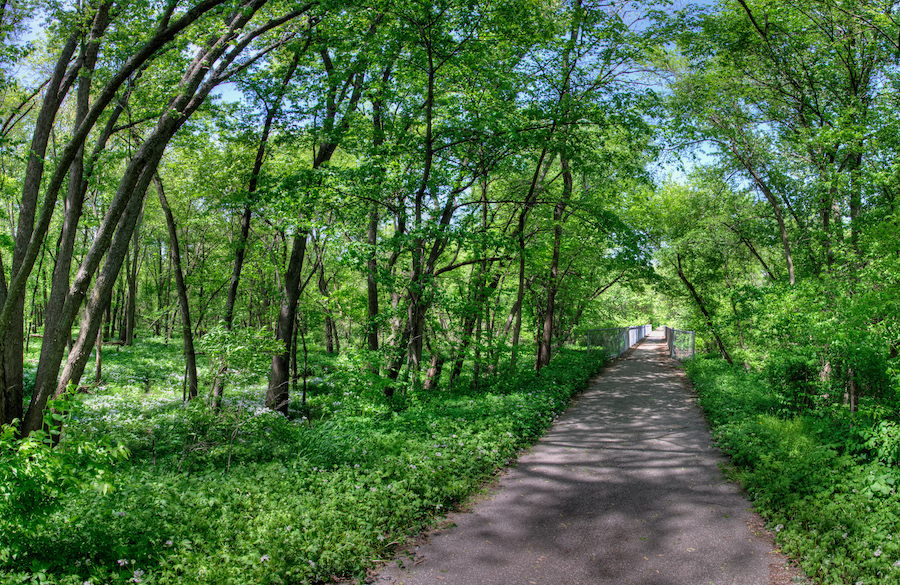
Cedar Valley Nature Trail
Experience America’s Heartland up close on the Cedar Valley Nature Trail through eastern Iowa. The 52-mile pathway, one of the first rail-trail conversions in the state, follows the beautiful Cedar River through agricultural fields and scenic swaths of prairie and wildflowers, while also connecting the urban centers of Waterloo, Cedar Falls and Cedar Rapids.
Route Reveal Celebration
Completing the Great American Rail-Trail: Catalyst Initiatives in Iowa
In every state along the preferred route of the Great American, needs for completing the trail vary. To spur trail completion, RTC has identified initial catalyst initiatives—projects or challenges that would most benefit from RTC’s national breadth of resources. (View the complete list of catalyst initiatives and criteria here.) Through these initiatives, RTC will support local and state partners, investing time, expertise and organizational resources in specific projects that are critical to the ultimate completion of the Great American Rail-Trail.
Statewide Trail Funding
RTC will continue to support statewide advocacy efforts seeking to renew existing state trail funding as well as to create a $20 million annual state investment in trails via the Outdoor Recreation Trust Fund. During the 2020 legislative session, RTC will work with the Iowa Natural Heritage Foundation and the Iowa Bicycle Coalition in pursuit of these goals. In addition, RTC will work to ensure allocation of federal Transportation Enhancement funds toward Great American Rail-Trail priorities.
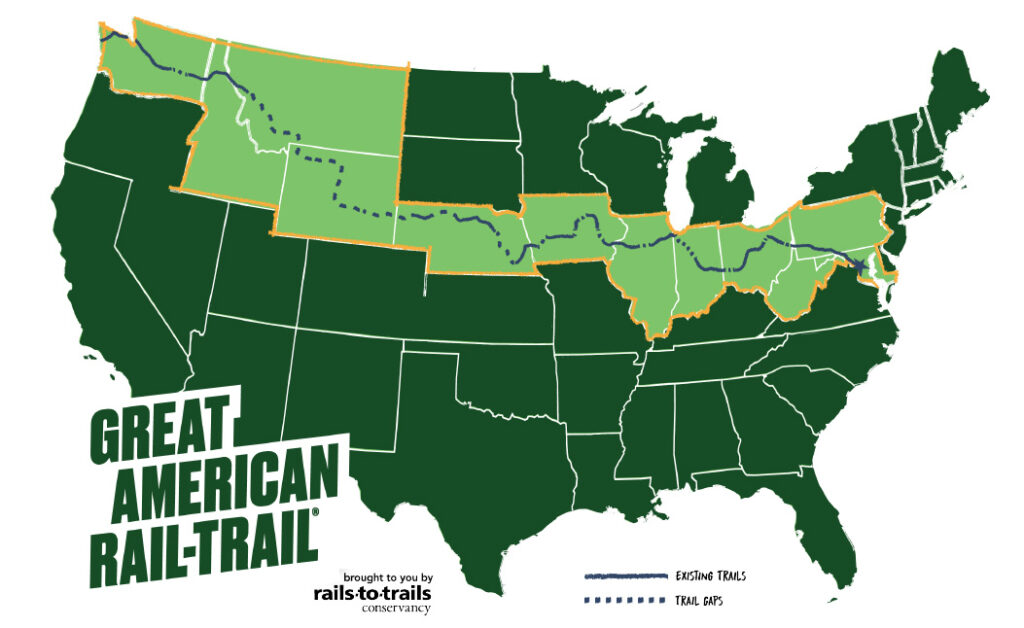
Great American Rail-Trail Preferred Route

